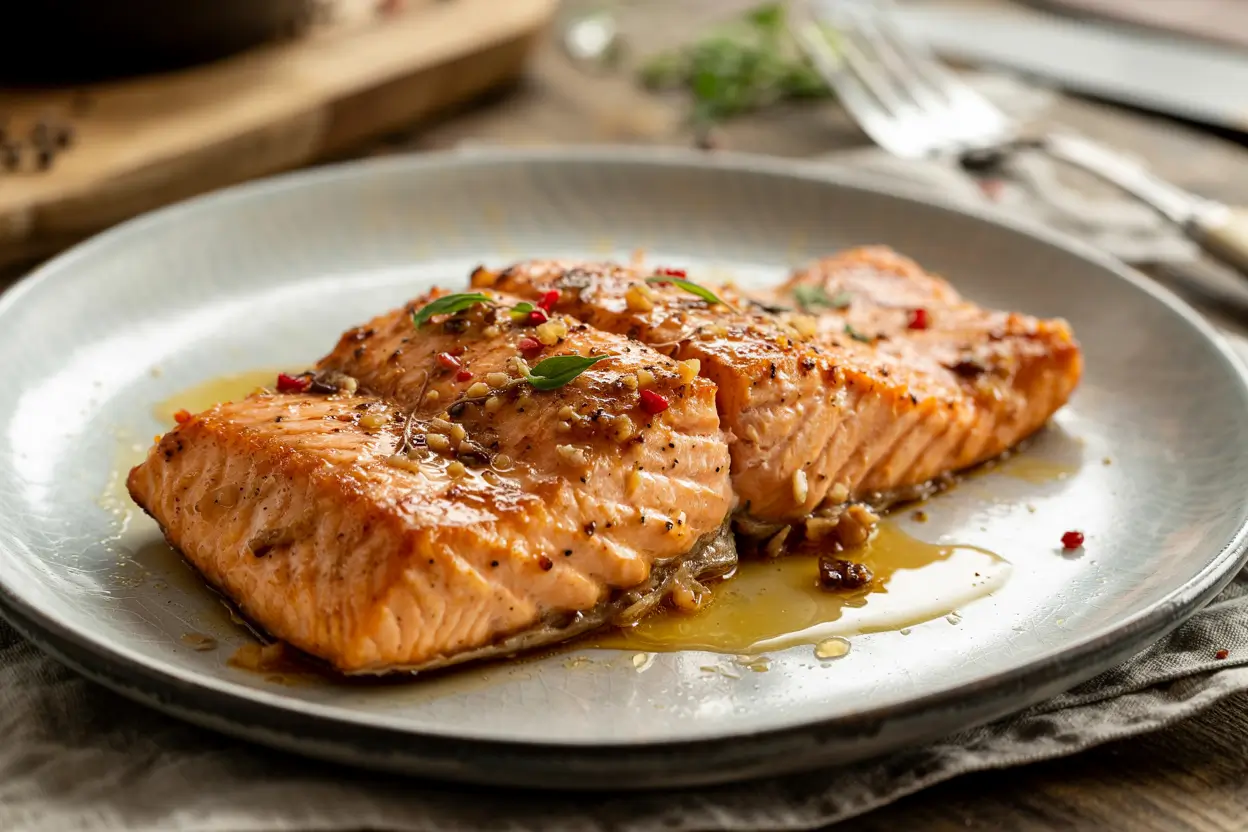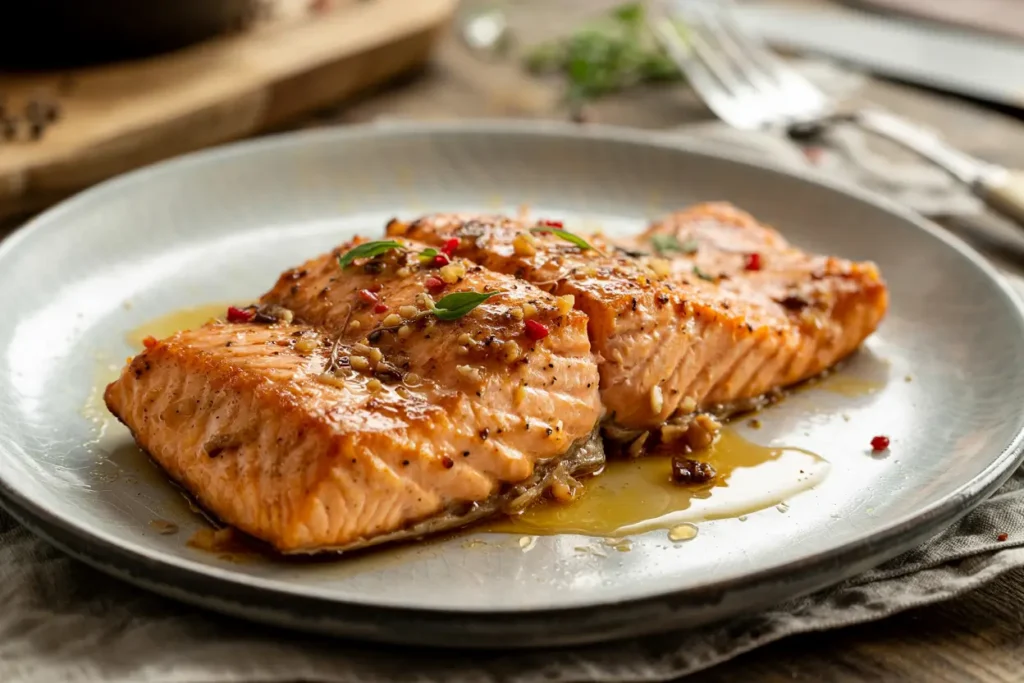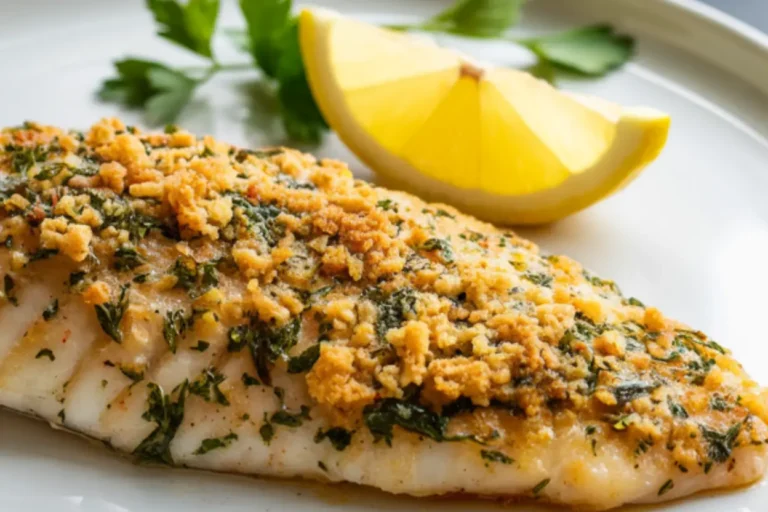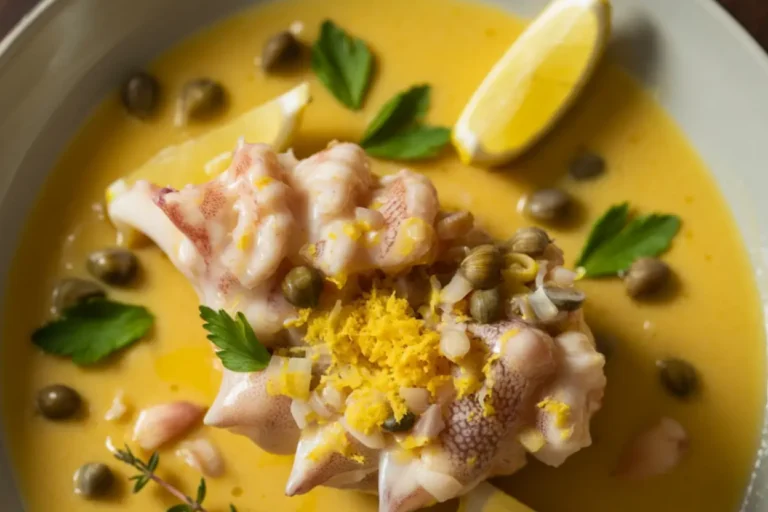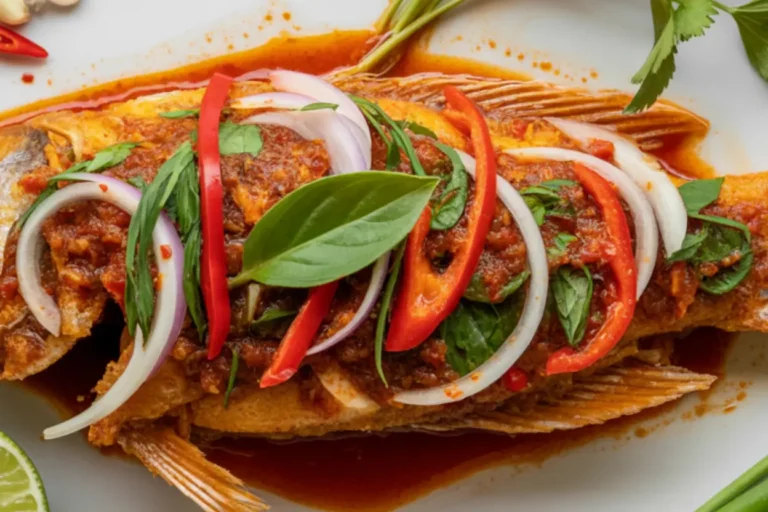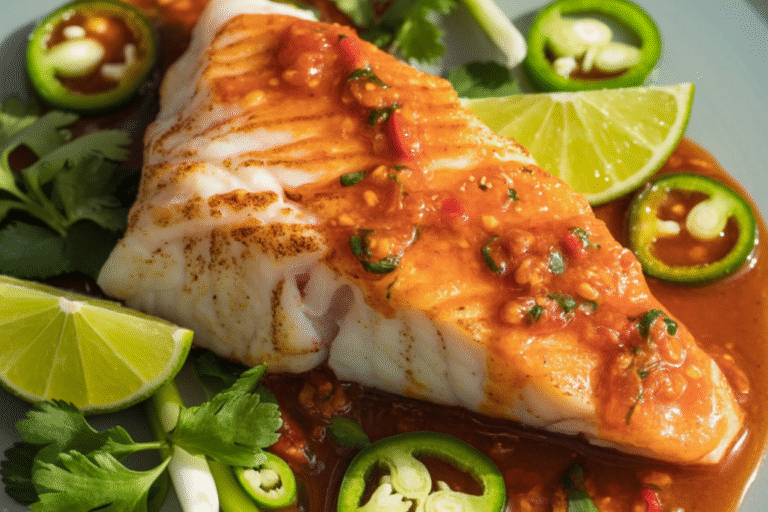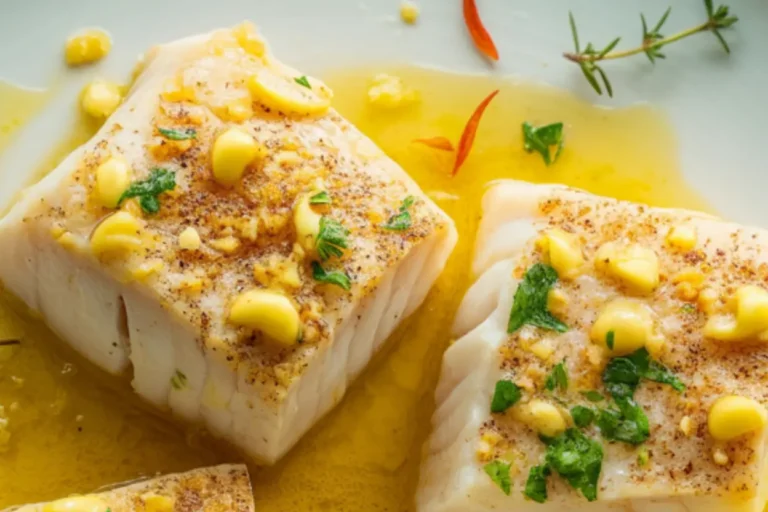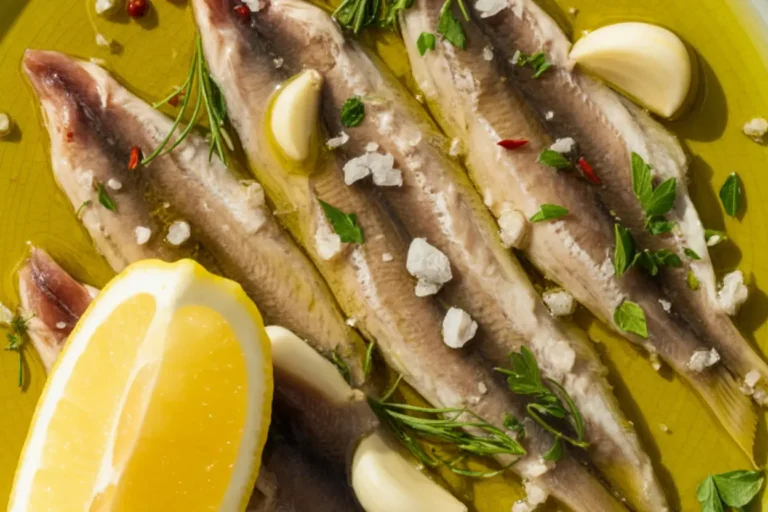Texas Roadhouse Salmon Recipe: How to Make It in 12 Minutes or Less
Table of Contents
How to Make Texas Roadhouse Salmon:
Quick Overview
This Texas Roadhouse Salmon recipe delivers flavorful, restaurant-quality fish in just 20 minutes from start to finish. The beauty lies in its simplicity—a carefully selected blend of seasonings creates that signature sweet-savory crust while a quick cooking method ensures perfectly tender, flaky fish every time. The special seasoning mix caramelizes beautifully when it hits the hot pan, creating a delicious exterior while keeping the inside moist and tender. With prep time under 5 minutes and cooking time of just 10-12 minutes, this is an ideal dish for busy weeknights when you want something impressive without spending hours in the kitchen.
Thank you for reading this post, don't forget to subscribe!The Ingredients I Use to Bring My Texas Roadhouse Salmon to Life:
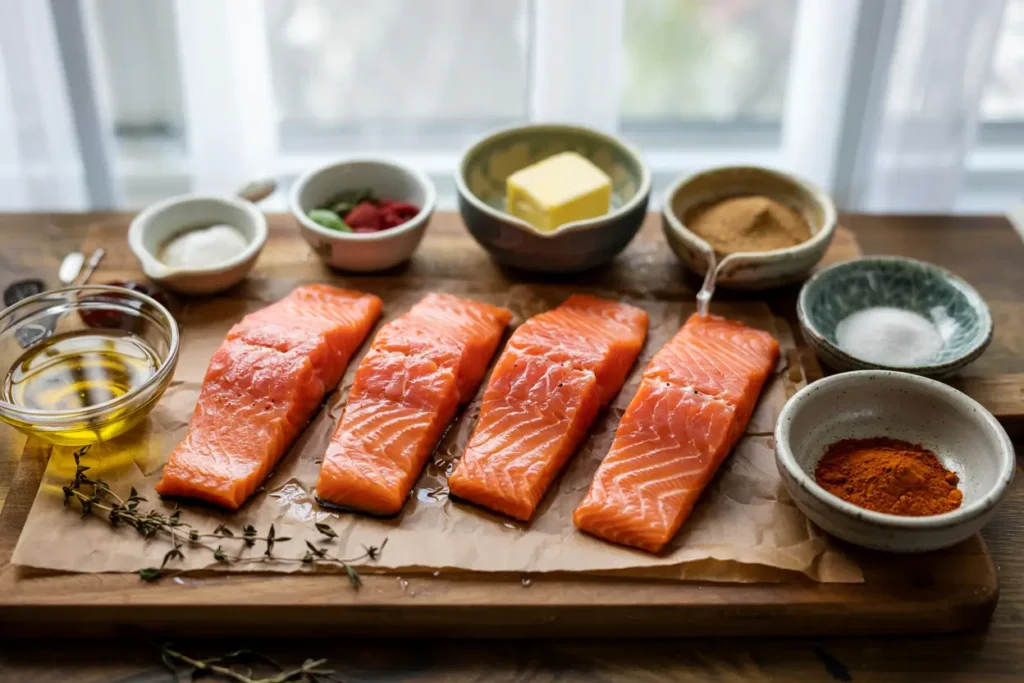
For the salmon:
- 4 salmon fillets (6 oz each), skin on or off according to preference
- 2 tablespoons olive oil
- 1 tablespoon unsalted butter
For the seasoning mix:
- 2 tablespoons brown sugar
- 1 teaspoon paprika
- 1 teaspoon garlic powder
- 1 teaspoon onion powder
- 1 teaspoon dried thyme
- ½ teaspoon salt
- ½ teaspoon black pepper
- ¼ teaspoon cayenne pepper (optional, for a slight kick)
For serving:
- Lemon wedges
- Fresh parsley, chopped (for garnish)
Step-by-Step Instructions:
- Prepare the salmon: Pat the salmon fillets dry with paper towels. This crucial step ensures a better sear and helps the seasoning stick to the fish. If you prefer crispy skin, leave it on; if not, you can ask your fishmonger to remove it or carefully slice it off at home.
- Mix the seasonings: In a small bowl, combine the brown sugar, paprika, garlic powder, onion powder, dried thyme, salt, black pepper, and cayenne pepper (if using). Mix thoroughly to ensure all spices are evenly distributed.
- Season the fish: Drizzle the salmon fillets with 1 tablespoon of olive oil, rubbing it over both sides to create a light coating. Generously sprinkle the seasoning mixture over both sides of each fillet, pressing gently to adhere. Reserve any leftover seasoning.
- Preheat the pan: Heat a large non-stick skillet or cast-iron pan over medium-high heat. Add the remaining tablespoon of olive oil and the butter, allowing the butter to melt and begin to sizzle slightly.
- Cook the salmon: Place the seasoned salmon fillets in the hot pan, flesh side down if the skin is on. Cook for 3-4 minutes without moving them, allowing a nice crust to form. Carefully flip the fillets and cook for another 3-4 minutes for medium doneness, or 5-6 minutes for well-done, depending on the thickness of your fillets.
- Rest and serve: Remove the salmon from the pan and let it rest for 2 minutes to allow the juices to redistribute. If you have any remaining seasoning mix, you can sprinkle a light dusting over the top for extra flavor. Serve with fresh lemon wedges and a sprinkle of chopped parsley.
What to Serve Texas Roadhouse Salmon With:
This Texas Roadhouse Salmon pairs beautifully with a variety of sides to create a complete, balanced meal. For an authentic steakhouse experience, serve it with a baked potato loaded with butter, sour cream, chives, and cheese. A side of steamed or roasted vegetables, like asparagus, broccoli, or green beans, adds color and nutrition to your plate.
Rice pilaf or garlic butter rice makes an excellent base for soaking up the delicious juices from the salmon. For a lighter option, a fresh garden salad with Ranch dressing complements the rich flavors of the fish.
Don’t forget the bread! Texas Roadhouse is famous for its rolls with cinnamon butter, so including these (homemade or store-bought dinner rolls with a honey-cinnamon butter) will complete your restaurant experience.
For beverages, a chilled Chardonnay or Pinot Grigio pairs nicely with the salmon’s flavor profile. For non-alcoholic options, iced tea with lemon or a light lemonade makes a refreshing accompaniment.
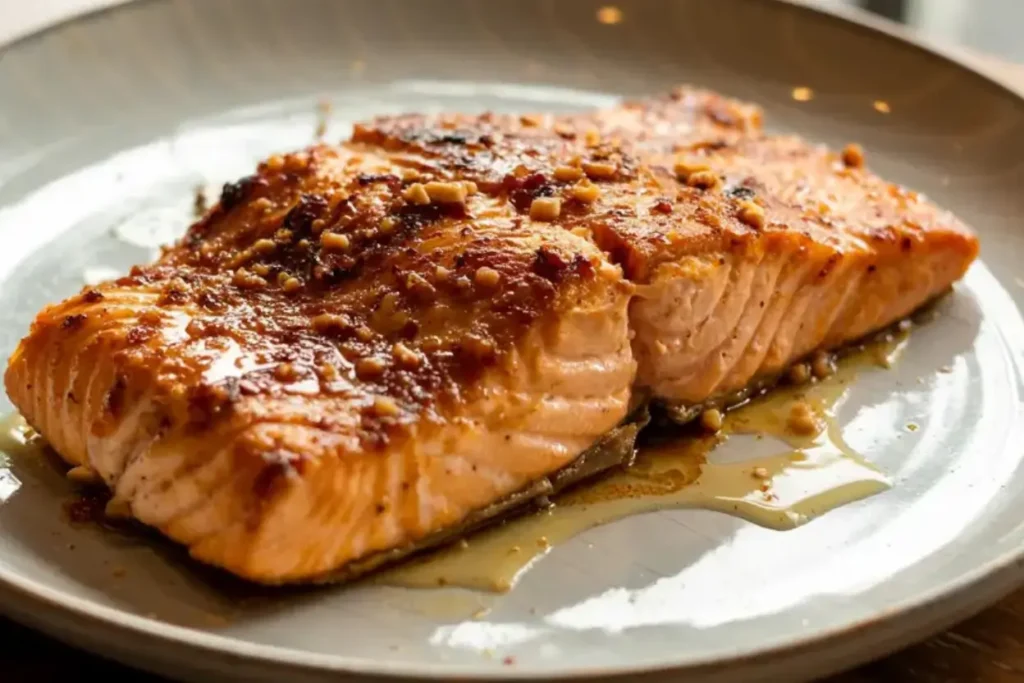
Top Tips for Perfecting Texas Roadhouse Salmon:
- Choose the right salmon: Look for fresh, bright-colored salmon fillets of even thickness. Wild-caught sockeye or coho salmon offers the best flavor, but Atlantic salmon works well, too.
- Pat it dry: Don’t skip patting the salmon dry before seasoning. Excess moisture prevents proper searing and can steam the fish instead, resulting in a less flavorful crust.
- Don’t overcook: Salmon continues cooking slightly after being removed from the heat. For perfectly moist fish, remove it from the pan just before it reaches your desired doneness.
- Get the pan hot: Wait until your pan is properly heated before adding the salmon. A hot pan creates that signature sear and caramelization that makes this recipe special.
- Watch the sugar: The brown sugar in the seasoning can burn if your heat is too high. If you notice excessive darkening, lower the heat slightly during cooking.
- Let it rest: Allow the salmon to rest for 2 minutes after cooking. This helps reabsorb juices for a moister final result.
- Seasoning adjustments: If you prefer a spicier version, increase the cayenne pepper. For a sweeter profile, add an extra teaspoon of brown sugar to the seasoning mix.
Storing and Reheating Tips:
Cooked Texas Roadhouse Salmon can be stored in an airtight container in the refrigerator for up to 3 days. For best results, allow the salmon to cool completely before refrigerating to prevent excess moisture from building up in the container.
When reheating, gentle methods work best to prevent drying out the fish. For the best texture, reheat the salmon in a preheated 275°F oven for about 15 minutes, or until just warmed through. Cover the salmon loosely with foil to prevent it from drying out during reheating.
Alternatively, you can reheat in a microwave on 50% power in short 30-second intervals until just warm, though this method is more likely to slightly overcook the edges.
Leftover salmon also works beautifully cold or at room temperature in salads or sandwiches. Try flaking it over a green salad with some of the original seasonings mixed into the dressing for a quick lunch.
While you can freeze cooked salmon for up to 2 months in a well-sealed freezer bag, the texture will change somewhat upon thawing. To freeze, wrap individual portions tightly in plastic wrap, then place in a freezer bag with the air pressed out. Thaw overnight in the refrigerator before gently reheating.
For meal prep, you can mix the dry seasoning blend ahead of time and store it in an airtight container for up to 3 months. This makes weeknight dinners even quicker to prepare when you’re short on time.
click to follow me on pinterest
Texas Roadhouse Salmon Recipe: How to Make It in 12 Minutes or Less
Cuisine: AmericanDifficulty: Easy4
servings10
minutes12
minutes380-420
kcalThis Texas Roadhouse-inspired salmon recipe features tender fillets seared and glazed with a sweet and smoky brown sugar spice blend. It balances savory and slightly spicy notes with a caramelized crust that perfectly complements the rich, flaky fish. A squeeze of fresh lemon and parsley finishes it off beautifully.
Ingredients
4 salmon fillets (6 oz each), skin on or off according to preference
2 tablespoons olive oil
1 tablespoon unsalted butter
2 tablespoons brown sugar
1 teaspoon paprika
1 teaspoon garlic powder
1 teaspoon onion powder
1 teaspoon dried thyme
½ teaspoon salt
½ teaspoon black pepper
¼ teaspoon cayenne pepper (optional, for a slight kick)
Lemon wedges
Fresh parsley, chopped (for garnish)
Instructions
- Prepare the salmon: Pat fillets dry with paper towels for a better sear. Keep skin on for crispiness or remove if preferred.
- Mix the seasonings: Combine brown sugar, paprika, garlic powder, onion powder, thyme, salt, black pepper, and optional cayenne in a bowl.
- Season the fish: Rub salmon with 1 tablespoon olive oil. Sprinkle seasoning mix generously on both sides, pressing to adhere.
- Preheat the pan: Heat a non-stick or cast-iron skillet over medium-high heat. Add remaining olive oil and butter, melting until sizzling.
- Cook the salmon: Place the salmon flesh-side down. Cook 3–4 minutes to form a crust, flip, and cook 3–6 more minutes to desired doneness.
- Rest and serve: Let salmon rest 2 minutes. Optionally, sprinkle leftover seasoning on top. Serve with lemon wedges and chopped parsley.
Notes
- This salmon recipe mimics the beloved flavors of a classic Texas Roadhouse dish: sweet, smoky, and just a bit spicy. The combination of brown sugar, paprika, and thyme creates a flavorful crust, while garlic and onion powders bring depth. You can pan-sear, grill, or even broil the salmon based on preference. Don’t skip the lemon wedge at the end, it brightens every bite!

